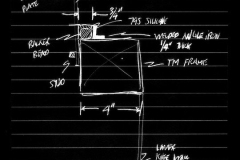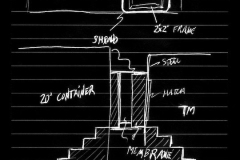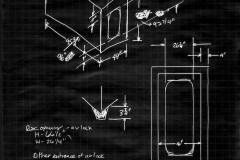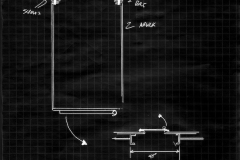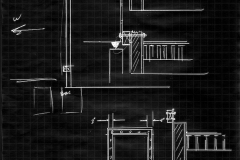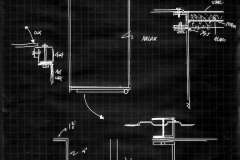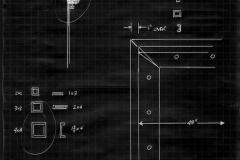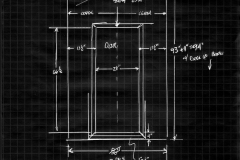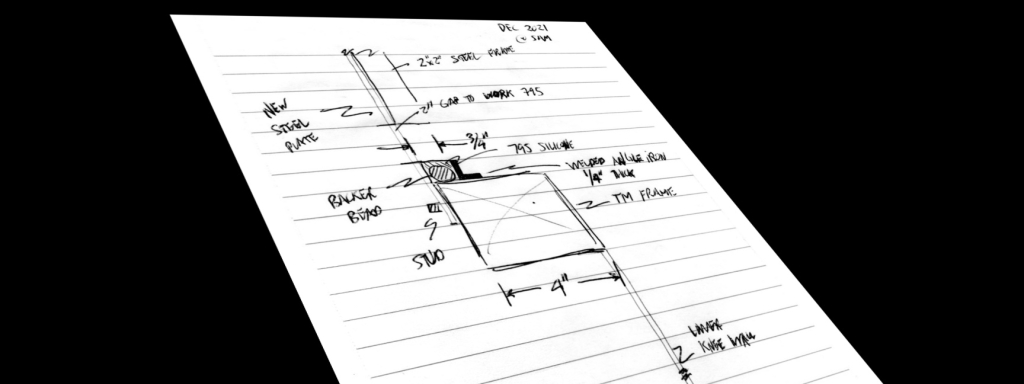
In a conference call with a potential corporate partner we had completed introductions and moved into discussion of how we might work together, at SAM, when one of the team members asked, “What it’s like, a day at SAM?” and “Do you have plans and drawings, or do you just, well, go for it?”
I laughed, for the answer is both. Given that most of our effort in 2021 was refurbishing a thirty year old sealed structure (which did not include drawings or instructions) we reverse engineered as much as engineered, learning how the Test Module worked as we went.
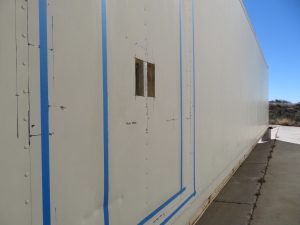 Now that we have transitioned into new construction we are engaged in proper design and engineering, planning several steps ahead. As we fabricate the workshop-corridor and Crew Quarters from 20′ and 40′ shipping containers respectively, much of our time was this week spent in careful measurement of the containers in order to build both hand-drawn and computer models.
Now that we have transitioned into new construction we are engaged in proper design and engineering, planning several steps ahead. As we fabricate the workshop-corridor and Crew Quarters from 20′ and 40′ shipping containers respectively, much of our time was this week spent in careful measurement of the containers in order to build both hand-drawn and computer models.
When I look back to my varied, formal education I can honestly say that my 8th grade drafting class was one of the most important ever taken. As with geometry, drafting is a language for precise communication. With a degree in Industrial Design I had once held advanced skills in rapid, 3D rendering by hand, though I admit to having not touched my pastels for two decades, and my markers were long ago dry and discarded. Yes, simple pen and paper ideation continues to beat a computer interface for immediate results, the ability to share an idea with someone standing right there, next to you, and provide foundation for computer models and fabrication of specific components.
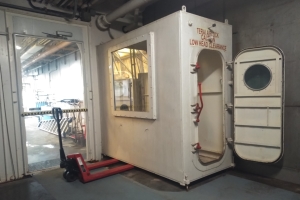 Colleen and I spent this week in careful, repeated measurement, design, and layout for the means by which we will attach an airlock (currently located in the basement of Biosphere 2) to the outside wall of the 40 foot shipping container. There are many challenges in doing this as the walls of shipping containers are not designed to carry a load, nor are they designed to sustain lateral compression. It is therefore imperative that the 5,000+ lbs airlock be supported on its own set of concrete pads, yet bound tight enough to the sheet aluminum exterior of the shipping container to extend the pressure vessel of the original Test Module.
Colleen and I spent this week in careful, repeated measurement, design, and layout for the means by which we will attach an airlock (currently located in the basement of Biosphere 2) to the outside wall of the 40 foot shipping container. There are many challenges in doing this as the walls of shipping containers are not designed to carry a load, nor are they designed to sustain lateral compression. It is therefore imperative that the 5,000+ lbs airlock be supported on its own set of concrete pads, yet bound tight enough to the sheet aluminum exterior of the shipping container to extend the pressure vessel of the original Test Module.
In the same breath, we are conducting preliminary design of the interior, making certain the hatches and pressure doors are aligned for easy transition from the airlock into the 40′, the 20′, and the Test Module in a relatively straight line, with trip hazards limited and the space to either side of the hatches and pressure doors unrestricted by framing.
We have a long way to go, but it feels great to be making this kind of progress.–Kai
This particular story is continued in Concrete, Preparation, and Airlock Install.


